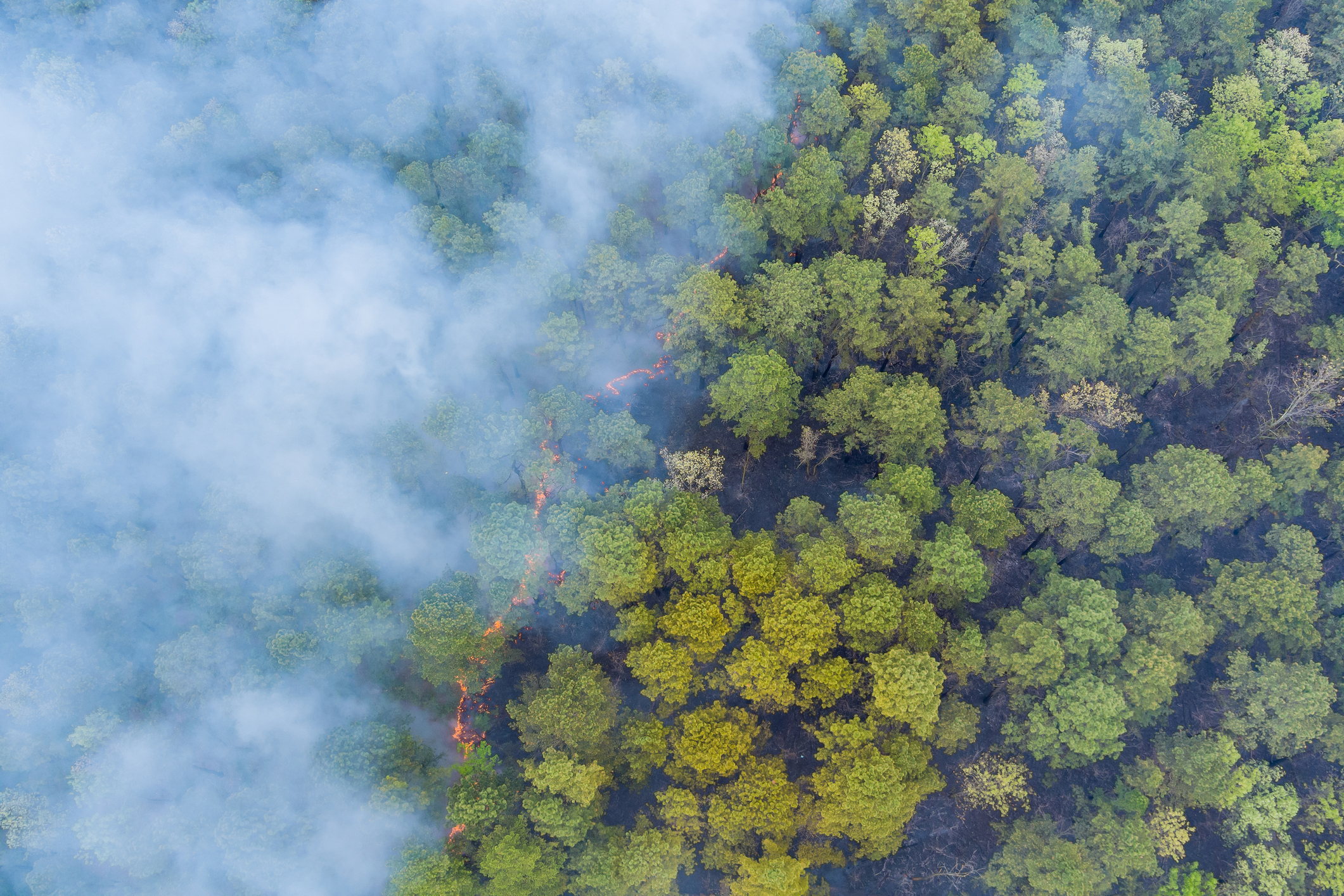This article challenges the pessimism about the future of forests, especially in Ukraine. It shows that forest coverage in Ukraine and many other regions has increased over time and that deforestation rates are declining globally. It argues that bad news stories about fires and climate change do not reflect the overall trends of forest recovery.
Last week, The Scotsman published an article by the journalist Anastasiia Zagoruichyk. In the piece, Zagoruichyk claims that thanks to climate change, fires, and deforestation in her native Ukraine, her children won’t get to experience childhood joys like “walking in the autumn forest, picking mushrooms and breathing fresh air.”
Forest coverage in Ukraine is, admittedly, a niche topic, but alarmism about the future of our forests and our children is unfortunately widespread. Indeed, it was not long ago that Extinction Rebellion founder Roger Hallam confidently declared that due to deforestation and other environmental damage, “our children are going to die in the next 10-20 years.” Thankfully for humanity, these far-fetched claims are not based in reality.
Contrary to what Zagoruichyk would have you believe, forest coverage in Ukraine has increased drastically in recent years. Between 1992 (the oldest data available) and 2020, the share of land in Ukraine covered by forest increased from 16.1 percent to 16.7 percent. While a 0.6 percentage point increase might seem like a small amount, this equates to an additional 3,622 square kilometers of forest – a land area more than 3 times larger than Hong Kong.
Globally, the world does continue to lose forest area. However, according to the United Nation’s Food and Agriculture Organisation (FAO), the rate of deforestation between 2010-2020 was 40 percent lower than in 1990-2000. At this rate, even without additional promises from world leaders at COP, the global deforestation rate will likely hit zero. Indeed, over the last 30 years, net afforestation has occurred in Europe (including Russia), North America, Oceania, and Asia.
The world’s two poorest regions, South America and Africa, are also the only ones that continue to experience net deforestation. This is no coincidence; many environmental scientists and commentators suggest that economic and ecological well-being are intimately related. According to one hypothesis, called the Environmental Kuznets Curve, a region’s environment worsens in tandem with economic growth but only until a certain income per capita is reached. At that point, people can afford to protect the environment, and ecosystems flourish. This environmental recovery has occurred across Europe and North America and is currently happening in China, Russia, India, and Vietnam.
Therefore, as South America and Africa continue to become richer, we can expect their rate of forest loss to slow and eventually reverse. Given this good news, why is there so much pessimism about the future of our forests? Zagoruichyk’s article offers some answers.
In the article, the rationale Zagoruichyk provides for her pessimism surrounding the future of Ukraine’s forest is because, in 2020, two fires destroyed a fairly large area of Ukrainian forest. Her thinking is that as global temperatures increase, fires will become more common, and in turn, most Ukrainian forests will be destroyed. This analysis ignores the fact these forest fires were likely caused by the common but harmful Eastern European practice of burning straw and other agricultural residues rather than climate change. But even if climate change were responsible for the fires, it is problematic to base predictions about the environment on recent events.
One of the problems with relying on recent news events to predict the future of our planet is that this outlook disregards long-term trends, which usually go unreported. As author and member of the House of Lords, Matt Ridley, points out “Almost by definition, bad news is sudden while good news is gradual and therefore less newsworthy.” This means the availability bias of bad news can distort one’s perception of a topic, concept, or trend. Simply put, it is easier to recall bad news because negative stories are more likely to appear in the media. In contrast, good news is gradual, less likely to be reported, and, therefore, harder to recall.
Similarly, in his work on the decline of violence, Harvard Professor Steven Pinker often notes that you never see a news reporter speaking to a camera from a foreign land stating that war hasn’t broken out there. The same concept is true for deforestation. All the deforestation or forest fires that don’t occur are not reported in the media.
To see the extent that availability bias and relying on recent events can distort one’s outlook about the future, it’s worth considering that the two Ukrainian forest fires in 2020 – which Zagoruichyk uses to justify her pessimism about the future of Ukraine’s forests – destroyed about 265 square kilometers of woodlands. While substantial, this amount of burnt forest represents an area of land that is a staggering 13.5 times smaller than the total amount of forest coverage that Ukraine has gained since 1992.
Indeed, contrary to popular headlines that suggest fires in places such as Ukraine, Australia, and United States indicate a worrying global trend, the amount of land burned worldwide each year has declined drastically over the last 120 years. In the early 1900s, roughly 4.2% of land worldwide was burned every year. Last year, just 2.4% of land was burned. Although bad news stories about the environment are certainly concerning, we should acknowledge that they do not provide a robust basis for shaping our outlook of the world.
Despite occasional setbacks, as global deforestation continues to decline, global net-afforestation will become the norm within the next few decades. And thankfully for Zagoruichyk and her future children, there will be even more Ukrainian forests for joyful autumnal walks.

